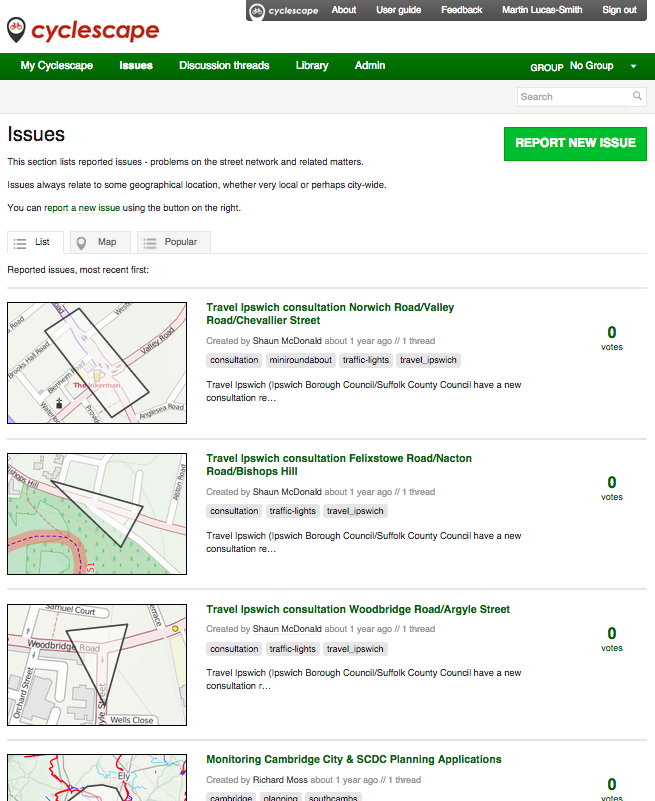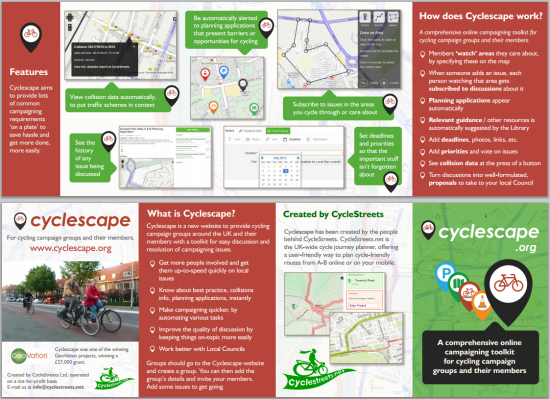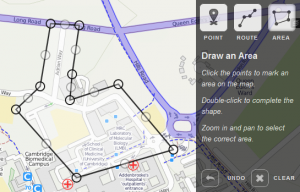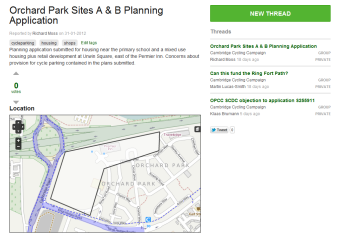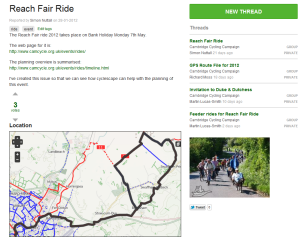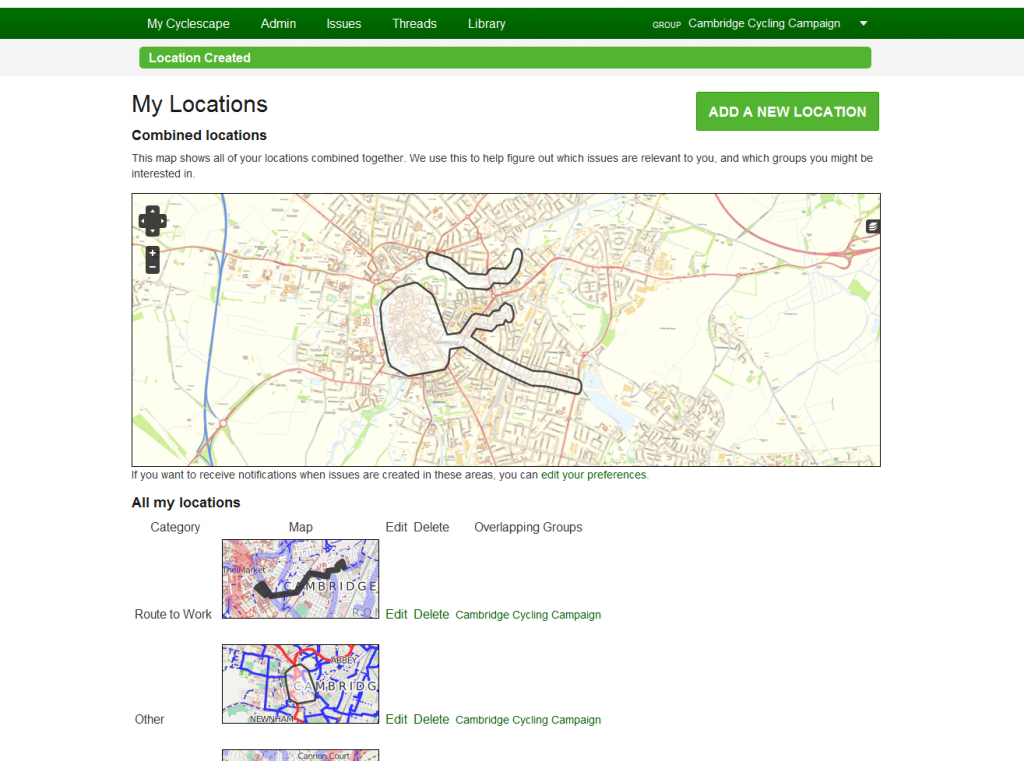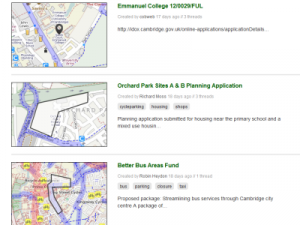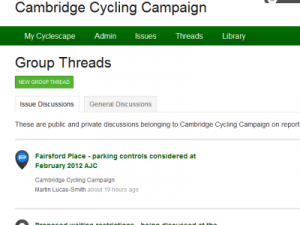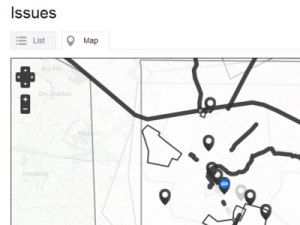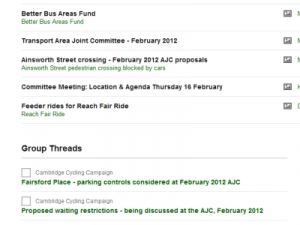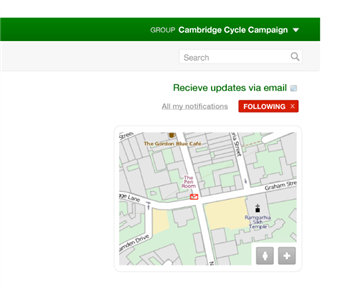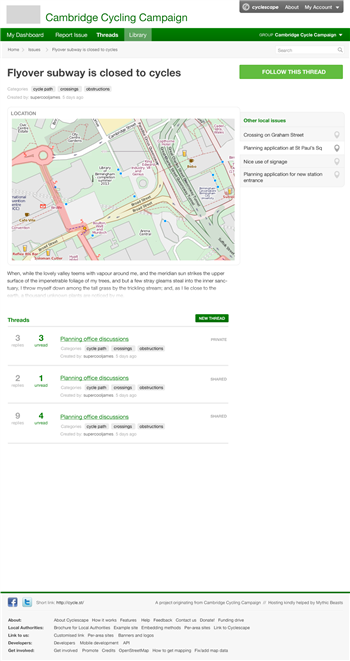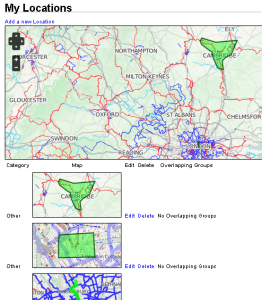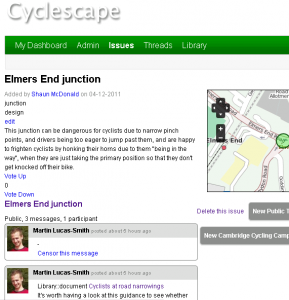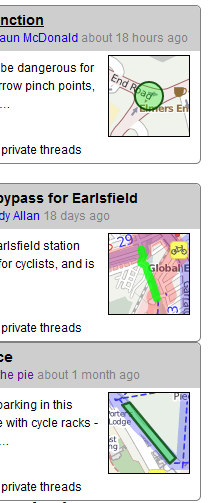Here are some of the designs for three of the main areas of the site: reporting an issue (problem), viewing it, and discussing it.
At present there are two parallel streams of work going on: feature coding (by our coding team of Andy and Andrew), and design work (by the designers we've appointed, Supercool). We’ll be talking more about how this design work is being developed in another blog post soon.
1. Report an issue
We all know that there are many infrastructure problems in the UK that act as barriers to getting more people cycling, or improving the safety and convenience of existing cyclists. Each of these we call an issue. Examples are:
- Lack of cycle parking at a destination (i.e. a single point location)
- The absence of a cut-through route that would shorten journeys (which you could draw on a map as a line)
- A large hostile roundabout that has no cycle provision (basically a whole area!)
Cyclists will be encouraged to use the site to report these problems, locating them on a map.
When adding an issue, you can show it on the map as a single point, a line or an area. You can also add some tags (keywords) that help categorise it. And if you have a photo, you can add that too.

2. The issue page – showing a reported issue
Each reported issue has a page of its own. These issue pages are public. They describe the reported problem, showing its position on the map, as well as other details.
Note how the different types of things – areas, routes and points are shown.
On the right hand side is a list of discussion threads that a group is having about this issue.
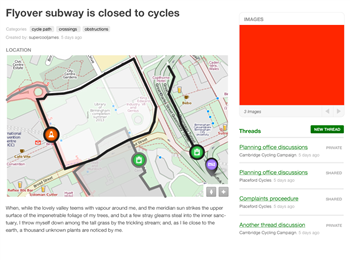
3. Threads: individual discussions of a particular issue
As shown above on the issue page, for each issue there may be one or more threads of discussion.
For instance, getting our hostile roundabout fixed will require a lot of discussion. There could be discussions on:
- alternative routes that could be created;
- how cycle lanes or cycle tracks could be added;
- how a similar problem has been solved in another area;
- potential funding sources that could be tapped into;
- what the planning office at the Council has been saying about the area; and
- a proposed solution that someone has come up with.
These discussions are specific to each cycling group using the system, and can be public or kept private to the group – we know that different groups work in different ways, as results from our survey are clearly showing.
Below, we show the page for one such discussion.
We’ll cover the thread page in more detail in a future blog post, but the key things are that it shows us a clear title, a description of the issue, the location, recommended resources that might be useful to bring into the discussion, replies to the discussion, your prioritisation of the issue, and a list of who is following it.
The button in the top-right lets you subscribe to an issue, so that you only get notified about things you actually care about, rather than every discussion.
If you use e-mail a lot, you can opt to receive updates by e-mail as well – again, another thing that our survey has shown is likely to be needed.


